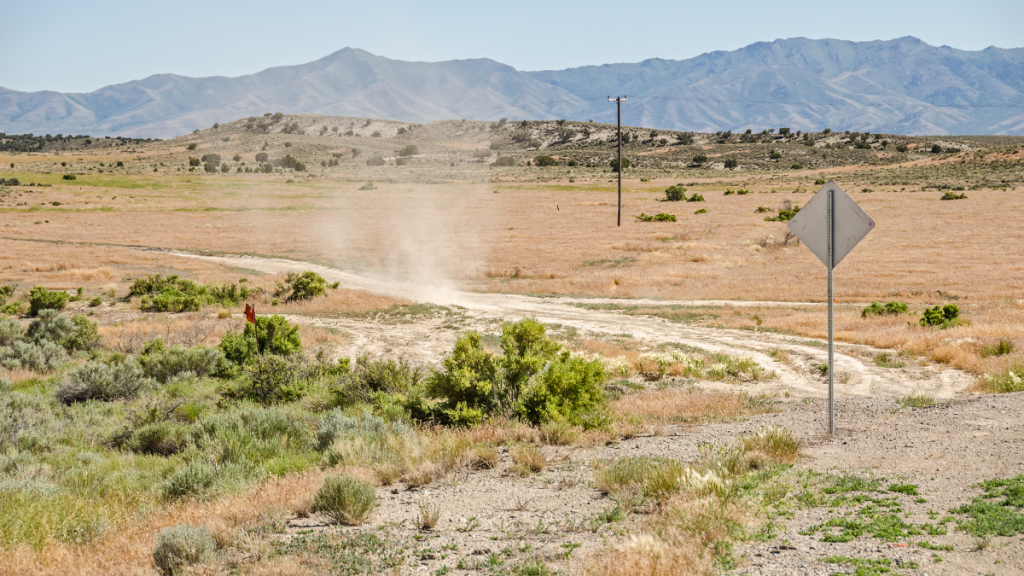Soil moisture is key to understanding the land’s surface and all the activities that occur there, both seen and unseen. These include agriculture, hydrology, weather, and human health, to name just a few. But first it is important to understand what soil moisture is. Soil moisture is the available water contained within the matrix of soil and organic matter at the surface of the earth, above the water table.
My work with the USDA is working to create a coordinated system across the United States for measuring and reporting soil moisture. This new system will inform farmers, engineers, and decision makers. Let’s look at how the water content of soil affects various activities.

Agriculture
Most people only consider soil moisture when they water their plants indoors. They might also use sprinklers to water their lawn or garden. But soil moisture is the critical component of a productive agricultural system. Crops depend on rain and soil moisture to feed their growth.
However, there is an important balance. Crops need enough water to grow, but just the right amount. Too much soil moisture means farmers cannot easily manage their crops. If tractors cannot traverse fields to plant because the soil is too wet, this is referred to as prevented planting. Likewise, if the combines and harvesters cannot collect the crops at the end of the season, this is called delayed harvest. Both have severe financial impacts.
Dryland farming systems use only rainfall and snowmelt for water. In areas with less predictable rainfall, farmers use irrigation. The farmers can control the amount of soil moisture available at any given time, but this comes with the cost to irrigate and the risk of depleting aquifers.
Hydrology
Soil moisture is considered the water stored in the soil in the “vadose zone.” This is the layer of soil which has a mixture of soil air and water usually ranging from the surface to 1 m (3’) deep, depending on your location.

The two extremes of soil moisture status are drought and flood. When the soil moisture falls below the wilting point of the local plants, they start to wilt and die, leading to drought conditions which is less than desirable. Drought conditions can lead to wind erosion, if plant life dies off and leaves the soil exposed.
The other extreme is when the soil reaches saturation. Water can start to flow over the surface instead of down into the soil. When this combines with rainfall, flooding can occur. New water has nowhere to go but across the land. Flooding can also occur when water in the soil is frozen. Sometimes flooding occurs when the soil just cannot soak up (infiltrate) heavy rainfalls. Flooding influences the water erosion of the soil, by overland flow.
Weather
When solar energy hits the soil’s surface, much of the energy is directed toward the heating and evaporation of water and soil moisture. This diversion of energy into water evaporation (much like our sweating) keeps the surface from heating up until all the soil moisture is evaporated. In this way, soil moisture helps maintain a cooler climate.
Put another way, soil moisture is the thermostat for the land surface. This influence on land surface heating means that the amount of soil moisture can have a significant impact on weather systems that are influenced by surface heat.

Human Health
One of the newer areas of research is the impact of soil moisture on human health. During drought conditions, winds can loosen dust particulates and release them into the air. This lowers air quality, impacting people with emphysema, bronchitis, and asthma. Fungal spores and molds can also be carried by wind erosion from dry soils, which can lead to other health issues like Valley Fever. Other safety issues can also arise from lack of soil moisture as dust can be a hazard for navigation and visibility for transportation.
This is just a brief overview of the impacts that soil moisture has on our everyday lives. Both the efficient management of soil moisture and the monitoring of soil moisture status are very important areas of study for scientists and engineers who recognize its importance. In situ networks, remote sensing satellites, and hyper resolution models are tackling the challenge of estimating and forecasting soil moisture status for the benefit of the public good.
Answered by Michael Cosh, USDA-Agricultural Research Service.
Dr. Cosh and colleagues published a paper in 2021 called Developing a strategy for the national coordinated soil moisture monitoring network in Vadose Zone Journal.
To receive notices about future blogs, be sure to subscribe to Soils Matter by clicking on the Follow button on the upper right! Explore more on our webpage About Soils. There you will find more information about Soil Basics, Community Gardens, Green Infrastructure, Green Roofs, Soil Contaminants, materials for Teachers and more.

One thought on “How does soil moisture impact our lives?”